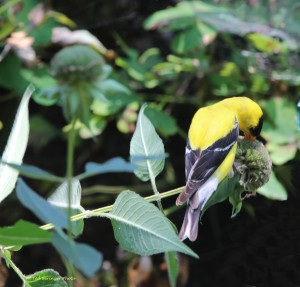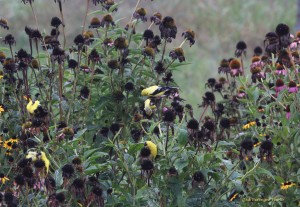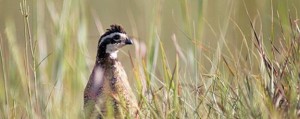Flower Seeds for the Goldfinch
Particularly during late August or most of September in Kansas, certain flower seed heads should be left alone after the blooms have been spent to allow birds to feed on the seeds. This practice particularly benefits American goldfinches that love the seeds of bee balm, Purple coneflowers, and all varieties of sunflowers. It’s often tempting to cut off the seedpods to make the flower garden look neat but it deprives these birds of a vital food source. When I watch them pecking seeds from my helianthus, they will often complete their meal by selecting one yellow flower petal that they gulp down almost as quickly as the seeds. The slender stems of bee balm are still sturdy enough to support Gold finches standing on the seed head while they extract the seeds one at a time. Many seeds often remain behind even after purple coneflower seed heads have turned dark brown or black. Usually Gold finches will be seen in groups dining on the seeds of all these flowers whose seeds become available in September when the birds are moving through the area. Gold finches may be permanent residents in other parts of Kansas but where I live in northeast Kansas, they are just pausing for a few weeks on their way further south. If you have bee balm, purple coneflowers and sunflowers in your yard, expect to see many visits from the American goldfinch this fall. – Ted Beringer



